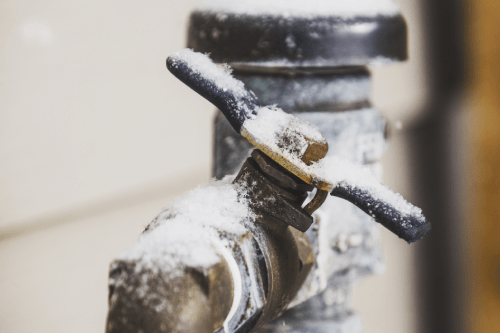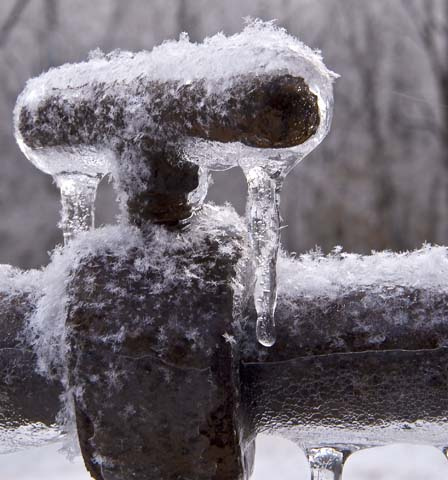Avoiding Frozen Pipes in Cold Weather: Key Tips
Avoiding Frozen Pipes in Cold Weather: Key Tips
Blog Article
The author is making several good annotation relating to Preventing and dealing with frozen pipes overall in this great article following next.

Winter can wreak havoc on your plumbing, especially by freezing pipelines. Right here's how to prevent it from happening and what to do if it does.
Introduction
As temperatures decrease, the threat of icy pipelines increases, possibly resulting in expensive repair services and water damages. Recognizing just how to stop icy pipelines is crucial for property owners in cold environments.
Avoidance Tips
Protecting susceptible pipes
Cover pipes in insulation sleeves or use warmth tape to secure them from freezing temperatures. Concentrate on pipes in unheated or exterior locations of the home.
Home heating techniques
Keep indoor spaces properly heated up, particularly locations with plumbing. Open cabinet doors to permit cozy air to flow around pipelines under sinks.
Exactly how to recognize frozen pipelines
Look for reduced water circulation from taps, unusual odors or sounds from pipelines, and visible frost on subjected pipelines.
Long-Term Solutions
Architectural adjustments
Consider rerouting pipes away from exterior wall surfaces or unheated locations. Include added insulation to attic rooms, cellars, and crawl spaces.
Updating insulation
Buy top quality insulation for pipes, attics, and walls. Proper insulation helps keep regular temperature levels and minimizes the danger of frozen pipes.
Protecting Exterior Pipes
Garden hoses and exterior taps
Disconnect and drain pipes yard hose pipes prior to wintertime. Install frost-proof faucets or cover outside faucets with protected caps.
Understanding Icy Pipes
What creates pipes to ice up?
Pipes ice up when exposed to temperature levels listed below 32 ° F (0 ° C) for prolonged durations. As water inside the pipes freezes, it increases, putting pressure on the pipeline wall surfaces and potentially causing them to burst.
Risks and problems
Icy pipelines can cause supply of water disruptions, property damage, and costly fixings. Ruptured pipelines can flooding homes and cause considerable structural damage.
Indications of Frozen Piping
Identifying frozen pipelines early can avoid them from breaking.
What to Do If Your Pipelines Freeze
Immediate activities to take
If you suspect frozen pipelines, keep faucets open to alleviate pressure as the ice thaws. Make use of a hairdryer or towels taken in hot water to thaw pipelines gradually.
Verdict
Protecting against icy pipes calls for positive steps and quick responses. By understanding the reasons, signs, and safety nets, home owners can protect their pipes during winter.
5 Ways to Prevent Frozen Pipes
Drain Outdoor Faucets and Disconnect Hoses
First, close the shut-off valve that controls the flow of water in the pipe to your outdoor faucet. Then, head outside to disconnect and drain your hose and open the outdoor faucet to allow the water to completely drain out of the line. Turn off the faucet when done. Finally, head back to the shut-off valve and drain the remaining water inside the pipe into a bucket or container. Additionally, if you have a home irrigation system, you should consider hiring an expert to clear the system of water each year.
Insulate Pipes
One of the best and most cost-effective methods for preventing frozen water pipes is to wrap your pipes with insulation. This is especially important for areas in your home that aren’t exposed to heat, such as an attic. We suggest using foam sleeves, which can typically be found at your local hardware store.
Keep Heat Running at 65
Your pipes are located inside your walls, and the temperature there is much colder than the rest of the house. To prevent your pipes from freezing, The Insurance Information Institute suggests that you keep your home heated to at least 65 degrees, even when traveling. You may want to invest in smart devices that can keep an eye on the temperature in your home while you’re away.
Leave Water Dripping
Moving water — even a small trickle — can prevent ice from forming inside your pipes. When freezing temps are imminent, start a drip of water from all faucets that serve exposed pipes. Leaving a few faucets running will also help relieve pressure inside the pipes and help prevent a rupture if the water inside freezes.
Open Cupboard Doors
Warm your kitchen and bathroom pipes by opening cupboards and vanities. You should also leave your interior doors ajar to help warm air circulate evenly throughout your home.

Do you like reading up on How to Prevent Your Pipes From Freezing? Post feedback below. We would be happy to know your insights about this blog entry. Hoping that you come back again later on. Feel free to pause to share this entry if you enjoyed reading it. Thanks for going through it.
View Website Report this page